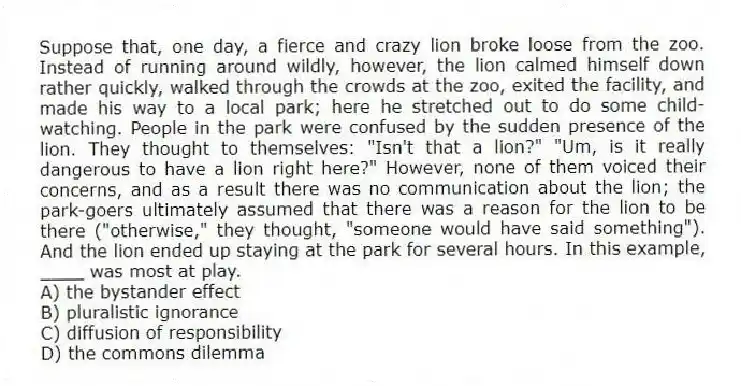
Suppose that, one day, a fierce and crazy lion broke loose from the zoo. Instead of running around wildly, however, the lion calmed himself down rather quickly, walked through the crowds at the zoo, exited the facility, and made his way to a local park; here he stretched out to do some child-watching. People in the park were confused by the sudden presence of the lion. They thought to themselves: "Isn't that a lion?" "Um, is it really dangerous to have a lion right here?" However, none of them voiced their concerns, and as a result there was no communication about the lion; the park-goers ultimately assumed that there was a reason for the lion to be there ("otherwise," they thought, "someone would have said something") . And the lion ended up staying at the park for several hours. In this example, ____ was most at play.
A) the bystander effect
B) pluralistic ignorance
C) diffusion of responsibility
D) the commons dilemma
Correct Answer:
Verified
Q125: Research on gender and helping indicates that
Q129: If a bus full of mixed-sex beautiful
Q130: In general, how does mood affect helping?
A)
Q131: In social psychology, the tendency for people
Q133: Compared to people who do not have
Q135: Someone who is high on the dimension
Q136: Research indicates that male and female helping
Q139: Both pluralistic ignorance and diffusion of responsibility
Q139: Suppose that Eli has a strong belief
Q140: Under what circumstances are attractive victims more
Unlock this Answer For Free Now!
View this answer and more for free by performing one of the following actions

Scan the QR code to install the App and get 2 free unlocks

Unlock quizzes for free by uploading documents